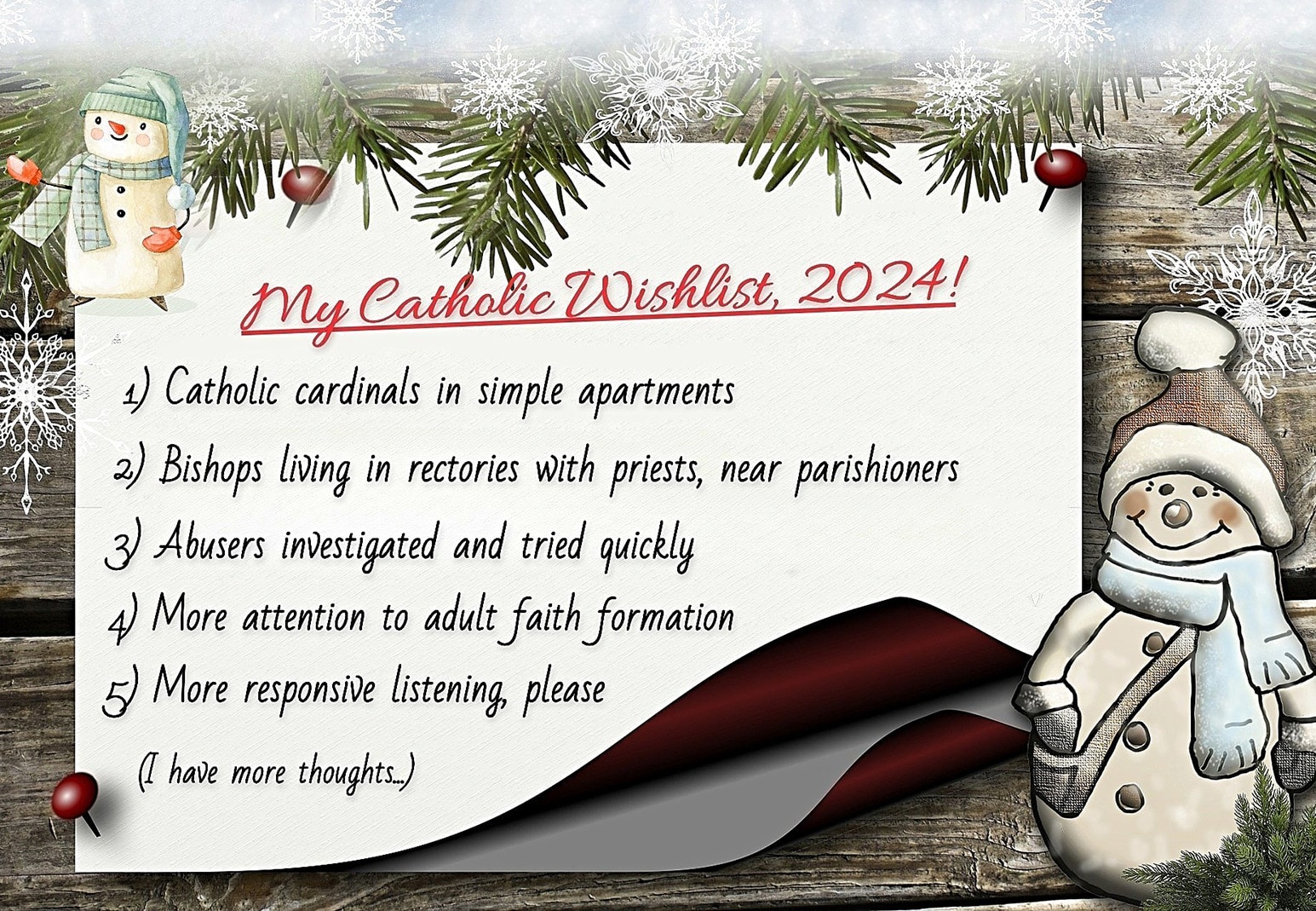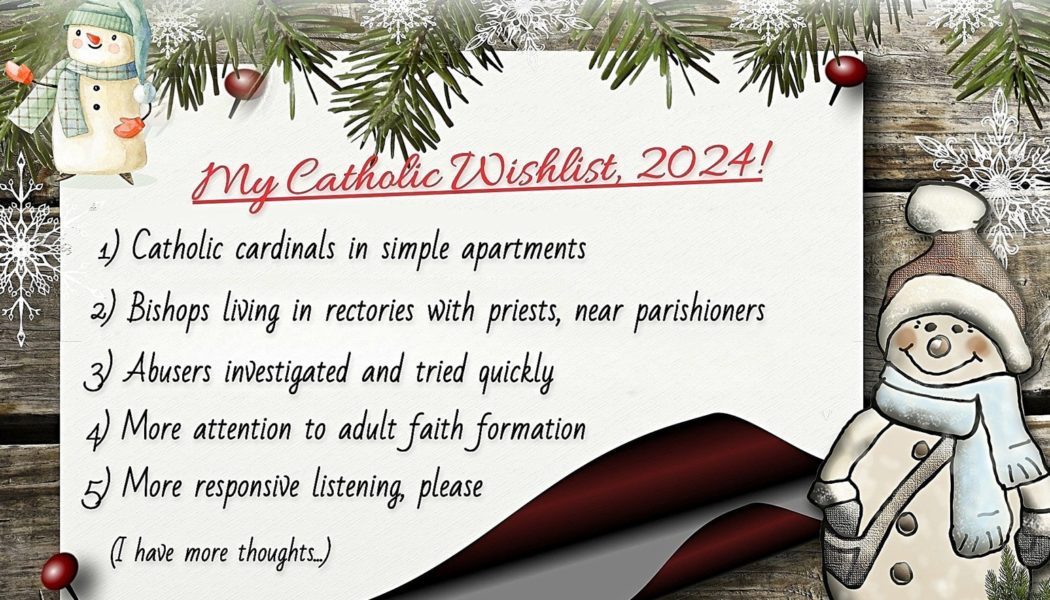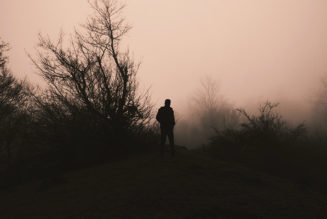
You have no idea how many of my columns have begun as a germ of a thought — usually an annoyed question — scribbled on a scrap of paper. This one reflects my late, rather curmudgeonly, “wish list” of what I’d like to see happen within Catholicism in 2024.
Indulge me, please. Let me just get it off my chest.
1. Cardinals living in simple apartments
It’s not a bad list. In fact, it may well reflect the thoughts of many who, after reading about the rather opulent Roman apartments used by Cardinal Raymond Burke (recently told by Pope Francis to start paying market rates for the place), and the newly convicted embezzler Cardinal Angelo Becciu (whose vast residence adjacent to St. Peter’s Square includes a “restaurant quality” kitchen and servant quarters for which he reportedly pays only a “nominal monthly rent”) may perhaps wonder:
— Why are these followers of Christ, who wear red as a symbol of their readiness to die for the faith, living in luxury to begin with?
— How do they look at the poor living under Bernini’s colonnade and then swan off to their fancy digs in good conscience?
— Do they learn about housing shortages in every great city, and of working people being unable to afford reasonable living space, and consider how incongruous their lived lives are to their stated purposes?
— In the 21st century, well past the age of medieval monarchies and religious peerages, what justifies their privilege?
— If two cardinals are living like this in Rome, there are others, of course. Why are any cardinals living large while the Bishop of Rome resides in a fairly humble suite at the Domus Sanctae Marthae (“St. Martha’s House”) and takes his meals in common with visiting priests and prelates?
2. Bishops living in rectories with priests, near parishioners
This, in a way, touches on the second item on my list and prompts another question: Why are bishops still living in pretty mansions instead of parish rectories, where they could, importantly, be among their priests and (perhaps more importantly) with the parishioners they are meant to shepherd?
I’ve written about this before — and some bishops have, in fact, either sold or repurposed their mansions and taken up residence in rectories, but why aren’t more of them? In 2024, can’t the shepherds become more incarnational, living and praying and hoping and laughing and crying with the people they serve?
Isn’t that what Jesus did?
3. Abusers investigated and tried quickly
Number three? This should be an absolute no-brainer, yet we are still waiting to hear the findings of an investigation into Father Marko Rupnik, the accused sexual abuser of over 20 women and at least one man, whose own Jesuit order found the accusations highly credible before they dismissed him for being disobedient. His accusers were initially not even going to get an investigation until news broke that Rupnik had been quietly incardinated in Slovenia, which rightly created a worldwide furor and finally set the fact-finding wheels in motion.
And here, we’d thought the Church had at least learned its lesson about moving around bad priests!
4. More attention to adult faith formation
Speaking of learning and lessons, can 2024 be the year when the institutional Church finally reads the room — or the emptying pews — and begins to seriously address how to better teach this fascinating, well-reasoned but often complex faith? Clearly the “just get them through to Confirmation,” method is an abject failure. The kids aren’t staying, and neither are the parents, and for one enormous but simple reason: They don’t know why they should.
Most Catholics don’t know what they don’t know. They know the scandals; they see the privileged princes; they’re savvy enough to understand media missteps and walk backs, but Catholics don’t know enough about the Eucharist, or the varied, subversive and uplifting power of prayer (and all the little whys and wherefores of the faith) to perceive that the Mass is nevertheless the most exciting place to be.
People want to believe in something, but Catholicism is doing a lousy job of explaining itself. It’s precisely because folks want to believe in something bigger than themselves — something extraordinary and powerful and real — that people accept invitations to learn about sigils and supernaturalism and the mediocre magic of “New Age” gnosticism.
5. A focus on the big picture
But while they’re doing that, they’re missing out on the greatest supernatural engagement in their midst — the one that begins with the sign of the cross and concludes with the veil between heaven and earth being penetrated as the God-man becomes present and alive to us and within us — with miracles and angels and saints all along the way.
Listen, perhaps if we seriously teach the adults — not just pointing them to 2,000 years of documents and expecting them to know where to start, but really forming the adults — they will become on fire for the faith and will want to pass it on to their children, not as an obligation but as a gift bestowed.
It is good, even exciting, to know the faith. It is good to serve justice and mercy with abiding love.
And, ahh! It is good, now and then, to indulge a frustrated rant.








